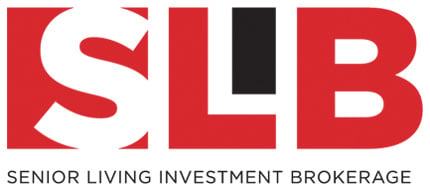The Colorado Real Estate Journal published an article written by Jeff Binder, Managing Director, and Vince Viverito, Senior Vice President, on July 17, 2024. The article covered trends in the senior housing industry so far this year.
Industry Trends in 2024
As we move through 2024, there is undoubtedly an active investment market for seniors housing communities. Fundamentally, the supportive long-term trend of an aging population and indications of an inadequate supply of senior housing units set the foundation. A few of the key reasons are the slower pace of construction, limited debt financing available, and inflationary pressures on construction materials and labor costs. Even if there is improvement in these areas, the typical seniors housing construction cycle is currently 24-36 months which would indicate any projects initiated in 2024 would not open until 2026/27.
Robust demand, as evidenced by the sector achieving the highest number of occupied units in Q1 2024, is expected to continue which should boost sector occupancy to pre-pandemic levels in late 2024 or early 2025. It should also be noted that the senior population will benefit in the near term from a meaningful wealth position given appreciation in housing prices (equity) and the robust performance of the stock market.
In a lemons-to-lemonade scenario, the market is still dominated by opportunities featuring distressed assets. We are seeing more stabilized Class B+ / A assets being introduced to the investment market, but these often are still softly forced sales as institutional sellers divest to close out funds, owner/operators look to exit the industry, debt is reaching maturity, a refinance is not preferred or realistic, etc. While not always the case, the profile for many of the assets currently transacting is usually an older physical plant, smaller unit count, tertiary or saturated markets, debt maturing, debt defeasance, and/or poor reputation.


Factors in the Senior Housing Sector
While we remain bullish on the seniors’ housing sector, we are also tracking these potential headwinds.
- CMS Staffing Mandate: Trickledown effect on seniors housing staffing – meaning if wages increase for SNF staff it will most likely cause other seniors housing wages to increase. Plus, general supply and demand for nurses would also cause wages to increase.
- “Health over Wealth Act”: Three federal agencies are launching a joint public inquiry into “corporate profiteering in health care”.
There are also a few beneficial to the sector items we are tracking.
- Expanding Veterans Options for Long-Term Care Act: Legislation to create a new pilot program that will allow eligible veterans to access assisted living communities for their long-term care.
- Demand growth: Continues to exceed new supply; total seniors housing inventory is only expected to grow 4.1% by 2025 which is half of the projected demand growth (National Investment Center for Seniors Housing & Care).
- Interest Rates: Likely a reduction in the near future.
With SLIB having closed well over 200 senior housing transactions over the last three years (2021-2023) and a strong pipeline in 2024, the volume of our activity provides us a clearer picture of the overall senior housing industry than most firms. While we are not to the mid-point of 2024 there are still several trends that we are noticing in our investment activity, including: higher average transaction size; increased buyer interest leading to a larger average number of bids per offering; and, as mentioned previously, greater acceptance by sellers to come off of initial pricing expectations. Read the Full Article Here





